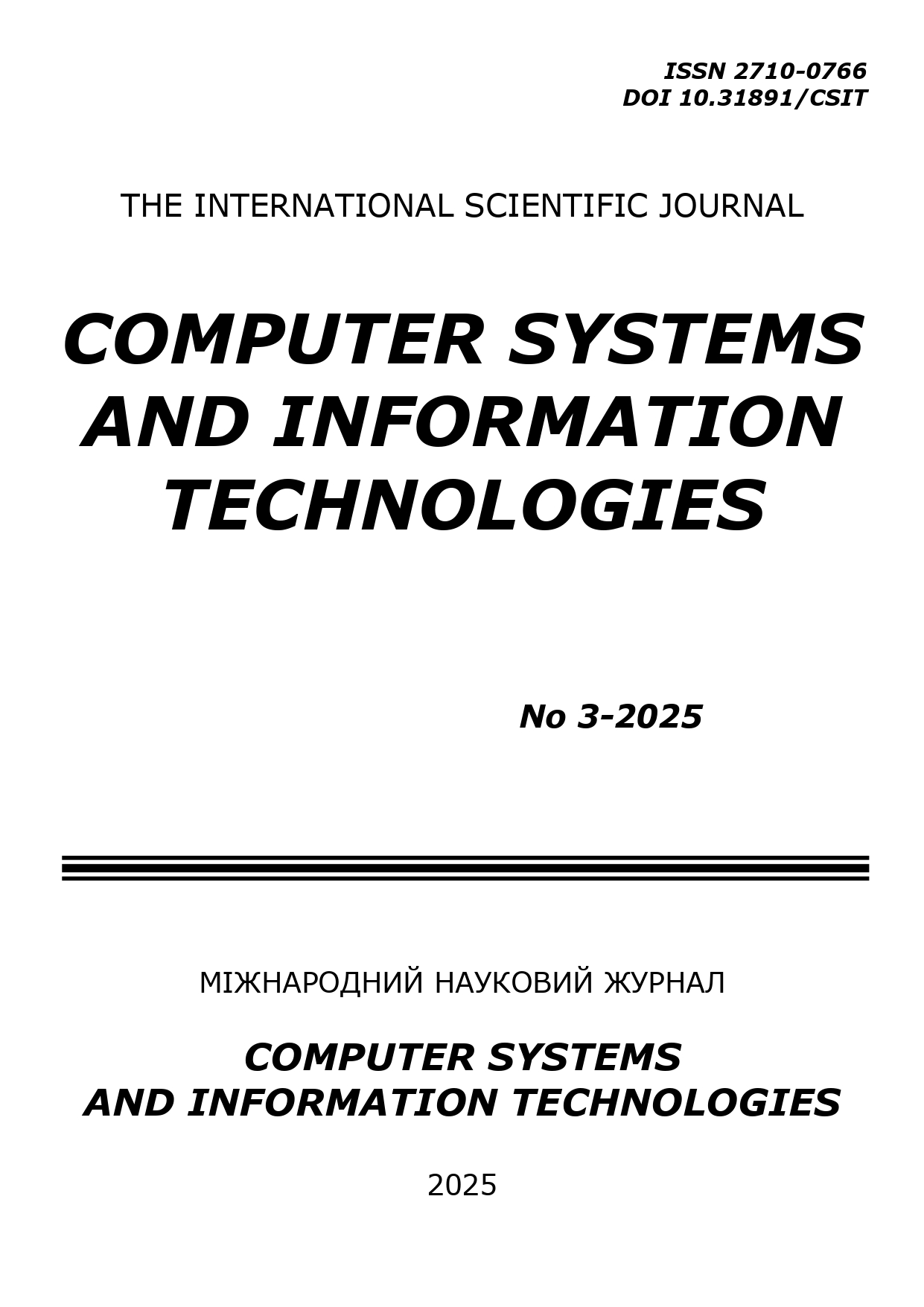INFORMATION SYSTEM FOR ADAPTIVE TRANSPORTATION PLANNING WITH CONSIDERATION OF ROAD TRAFFIC VARIABILITY
DOI:
https://doi.org/10.31891/csit-2025-3-5Keywords:
adaptive transportation planning, transportation problem, time-dependent cost, normal distribution, linear programming, interactive visualization, routingAbstract
This paper presents an information system for adaptive transportation planning that integrates the classical linear-programming transportation problem with a time-dependent cost model approximated by a combination of normal probability density functions. The proposed mathematical model implements discretization of the 24-hour interval into equidistant time steps, which enables correct accounting for diurnal variations in road conditions while preserving high computational efficiency. A unified operational algorithm was developed based on the classical Simplex method, and key methods for constructing an initial feasible plan for the transportation problem were implemented to allow comparative analysis of performance and accuracy in dynamic conditions.
The outcome of the study includes an intuitive web interface implemented with React, using react-vis for charting, Leaflet for interactive maps and OSRM for routing, together with a server module written in Go that employs the gonum/lp library for solving linear-programming problems. The proposed architecture provides fast interaction between client and server modules, high scalability and straightforward cross-platform deployment.
Experimental validation confirmed the correctness of the model both in cases with static cost coefficients and in the enhanced time-dependent transportation formulation. In particular, the system supports automated temporal analysis of solutions and identification of cost-optimal departure times. In the intercity scenario dynamic optimization yielded up to 7.2 % savings relative to the worst static scheduling alternative, while in the urban scenario accounting for time-dependent costs produced savings up to 47.8 % for evening departures compared to the typical morning peak — consistent with observed urban traffic patterns.
A comparative analysis with leading commercial transport management systems demonstrated that, despite its streamlined architecture, the proposed system delivers the required level of flexibility and adaptivity while markedly reducing implementation and maintenance costs. Consequently, it constitutes an accessible and transparent tool for educational institutions, research activities and local logistics projects in small and medium-sized enterprises.
Downloads
Published
How to Cite
Issue
Section
License
Copyright (c) 2025 Гліб ІЩЕНКО , Олександр ШЕВЧУК

This work is licensed under a Creative Commons Attribution 4.0 International License.

